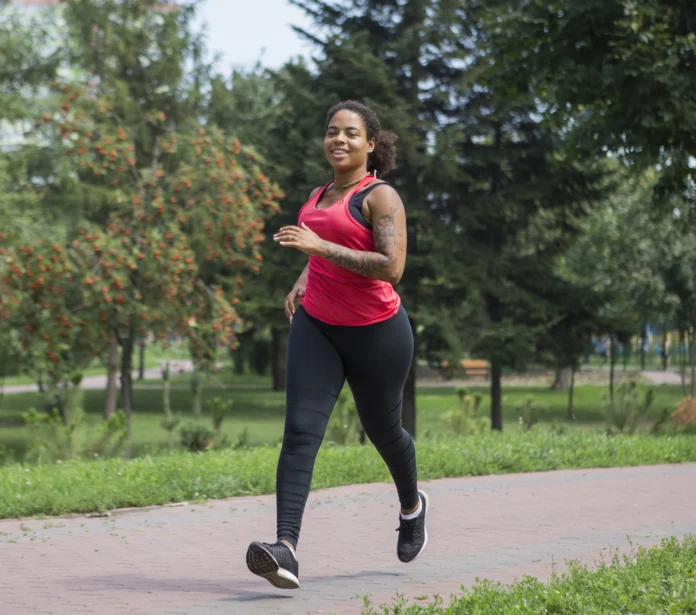An expert says walking 10,000 steps a day might not matter if you don’t do one other thing too
For those of us living in a sedentary world, sitting down for work, travel, and even at home to relax, daily step goals can provide an easy and practical way to move more. But what you perhaps haven’t realized is that if you’re not also taking cadence (i.e., how many steps per minute) into account, simply assuming ticking 10,000 slacks off all of the above points on your checklist to good health might be premature.
For the greatest benefits, walk at a pace of more than 100 steps per minute and aim for higher daily step counts, says walking expert Dr Elroy Aguiar. His team’s research, which was published this month in the British Journal of Sports Medicine, found this cadence predicted moderate-intensity exercise.
Advertisement
That’s important because “all of the research in this area suggests that most of the benefits [from walking] accumulate at a moderate or higher intensity,” she says.
What Does This Mean for Walking Cadence?
Walking At 100 Steps Per Minute Leads To Better Physical Health Outcomes Than A Slower Amble WalkIntent[October 2020] The more work you put into this physical exercise, the faster it will move, and your heart rate is going to increase to provide the highest oxygen possible that can be used by your body and working muscles. This thereby leads to increased intensity of the activity, and then you can classify it as a “moderate-intensity” exercise.
Those are the recommendations issued by the World Health Organisation (and echoed by our own NHS ) for physical activity guidelines, which also recommend a total of 150 minutes per week of moderate-intensity physical activity, along with 75 minutes per week of vigorous-intensity physical activity or an equivalent combination of the two.
Fortunately, Dr Aguiar notes that 100 steps per minute should be “very possible” for most.
“One hundred is a very doable number, if most people went for a walk down the street they would self-select around 110 to 115 steps per minute,” he says.
You could increase the intensity to vigorous, aerobic walking by walking at about 130 steps per minute. If you operate above this zone, or maybe even just slightly outside of the periphery of it, you can shift gears and derive more benefit from whatever activity it is you are engaged in.
Advertisement
Including steps, do you need to still walk daily?
According to Dr Aguiar, the research is «a little bit unclear» in terms of how important walking volume (step count per day) is when performed at lower cadence and intensity.
“There is a lot of research on steps and walking 10k per day yielding better physical health, but similar studies found that volume only matters if it is higher intensity as well,” he says.
For best results, keeping both a faster walking cadence and a higher daily step count is recommended by Aguiar. Best of all, you do not have to hit the magic 10,000-step target to gain them, he adds.
According to Dr Aguiar, ‘the research is suggesting around 7,000-8,000 steps per day in terms of volume and part of those within should be 20–30 minutes walking at 100–130 steps per minute or faster’. “Either would be the most practical pairing if someone is looking for both volume and intensity benefits.
“On the flip side there is no upper threshold for how much walking activity is good or bad for you — if you can get more steps, it’s better,” he adds.
Benefits of walking
Advertisement
Whilst being a very accessible, zero-cost activity walking has an abundance of benefits.
A person who may be sedentary and at very low levels of physical activity might derive some cardiovascular benefits or improvements in aerobic fitness with a walking program, Dr Aguiar notes.
” Most of whom are gaining in a little bit of sweat — mild to moderate intensity turned up towards the vigorous side (at least “walking in a way that starts to get you huffing and puffing and going for longer than 10 minutes”).
“130 steps per minute is starting to get into really essentially high mobility speeds,” he said. “Your heart rate is going faster, you’re consuming more oxygen, and that in turn will translate into gains in aerobic fitness.
“The research is very clear on that — people with high aerobic fitness have a significantly lower risk of chronic disease than those who have low fitness,” Press.
The World Health Organisation has physical activity guidelines which simply say GET PEOPLE TO MOVE but they talk a lot about walking as well. It says that regular physical activity such as those offered by a boot camp training program can result in “important physical and mental health benefits” such as the prevention of chronic diseases, reduction of symptoms related to depression and anxiety, and improvements to overall well-being just to list a few.
This is why, if good health and activity rejuvenation are your first interest and you want some easy fitness gains, daily walking is always the place to start — though not before too long.
Advertisement
Read More: Ultimate Guide to a Weight Loss Diet





